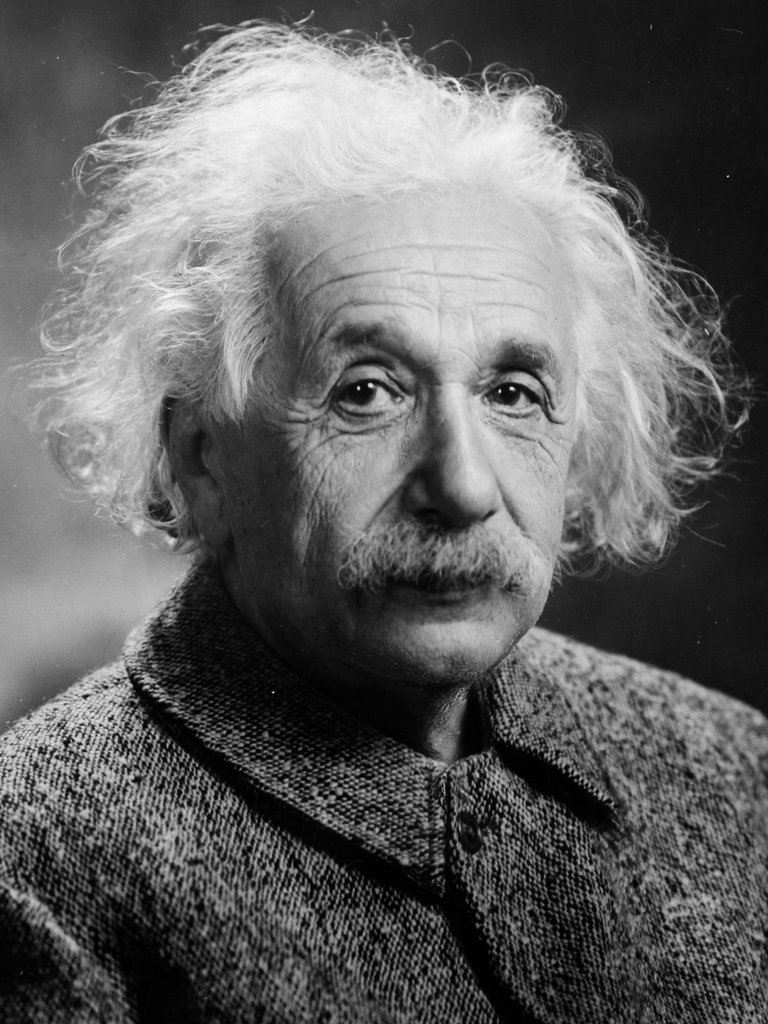Versión en español
Con lo aprendido en el post: Como resolver problemas en 4 sencillos pasos, que les invito a leerlo si no lo han hecho, ahora les traigo una serie de ejercicios matemáticos de lógica donde pondrán a prueba su razonamiento y capacidad de comprensión. Para el primero les daré una pista pero el resto traten de resolverlos por cuenta propia.

Albert Einstein, uno de los físicos más reconocidos, resolvió estos ejercicios que le había mandando su amigo Wertheimer, pero no los hizo a la primera, sobre esto hablo más al final del post. Fuente
Sin más demora, aquí los tienen.
Rapidez promedio
Una conductora se embarca en un viaje. Durante la primera mitad de la distancia, ella conduce al ritmo pausado de 30 km/h, durante la segunda mitad conduce a 60 km/h. ¿Cuál es su rapidez promedio en este viaje?
- Pista: es tentadora la idea de sumar las velocidades y dividirlas para hallar el promedio, pero como no sabemos cuanto tiempo ni cuantos kilómetros recorrió en las respectivas velocidades hay que buscar otro enfoque.
Distancia, tiempo y velocidad
Un automóvil viejo tiene que recorrer un camino de 2 millas, cuesta arriba y hacia abajo. Debido a que es tan viejo, el automóvil puede subir a la primera milla, de subida, no más rápido que la rapidez media de 15 km/h. ¿Qué tan rápido tiene que viajar el automóvil la segunda milla, en el descenso puede ir más rápido, por supuesto, para lograr una rapidez media de 30 km/h para el viaje?
Comparando descuentos
¿Cuál precio es mejor para el comprador, un descuento del 40% o dos descuentos sucesivos del 20%?
Propagación de amibas
Una amiba se propaga por división simple, cada división toma 3 minutos para completarse. Cuando esa amiba se pone en un recipiente de vidrio con un fluido nutriente, el recipiente está lleno de amibas en una hora. ¿Cuánto tiempo haría falta para que el contenedor se llenara si en lugar de comenzar con una amiba, comenzamos con dos?
Estos ejercicios les ayudarán a mejorar el razonamiento y les serán útiles para comprender diversos aspectos matemáticos. Los que logren resolverlos los estaré leyendo en los comentarios. No se sienta mal si usted no puede resolver estos problemas de inmediato. Los problemas 1 y 4 fueron enviados a Albert Einstein por su amigo Wertheimer. Einstein (y su amigo Bucky) disfrutaba de los problemas y le escribió a Wertheimer. Esta es parte de su respuesta:
- Su carta nos dio un montón de pruebas divertidas. La primera prueba de inteligencia nos ha engañado a ambos (Bucky y yo). ¡Sólo trabajándolo fuera me di cuenta de que no se dispone de tiempo para la trayectoria descendente! Bucky también fue engañado en el segundo ejemplo, pero yo no. ¡Curiosidades como ésta nos muestran lo tontos que somos! (Véase Mathematical Intelligencer, Primavera de 1990, página 41.)
English version
With what you have learned in the post: How to solve problems in 4 easy steps, which I invite you to read if you have not done so, I now bring you a series of mathematical logic exercises where you will test your reasoning and comprehension skills. For the first one I will give you a hint, but try to solve the rest on your own.

Albert Einstein, one of the most renowned physicists, solved these exercises that his friend Wertheimer had sent him, but he did not do them the first time, I will talk more about this at the end of the post. Source
Without further ado, here they are.
Average speed
A female driver embarks on a trip. During the first half of the distance, she drives at the leisurely pace of 30 km/h, during the second half she drives at 60 km/h. What is her average speed on this trip?
- Hint: it is tempting to add up the speeds and divide them to find the average, but since we don't know how long and how many kilometers she drove at the respective speeds we have to look for another approach.
Distance, time and speed
An old automobile has to travel a 2 mile road, uphill and downhill. Because it is so old, the automobile can go up the first mile, uphill, no faster than the average speed of 15 km/h. How fast does the automobile have to travel the second mile, downhill it can go faster, of course, to achieve an average speed of 30 km/h for the trip?
Comparing discounts
Which price is better for the buyer, a 40% discount or two successive 20% discounts?
Propagation of amoebae
An amoeba spreads by simple division, each division taking 3 minutes to complete. When that amoeba is placed in a glass container with a nutrient fluid, the container is full of amoebas within an hour. How long would it take for the container to fill if instead of starting with one amoeba, we started with two?
These exercises will help them to improve their reasoning and will be useful to understand various mathematical aspects. Those who manage to solve them I will be reading them in the comments. Don't feel bad if you can't solve these problems right away. Problems 1 and 4 were sent to Albert Einstein by his friend Wertheimer. Einstein (and his friend Bucky) enjoyed the problems and wrote to Wertheimer. This is part of his reply:
- Your chart gave us a lot of fun tests. The first intelligence test fooled both of us (Bucky and I.) Only by working it out did I realize that no time is available for the downward trajectory! Bucky was also fooled in the second example, but I wasn't. Curiosities like this show us how dumb we are! (See Mathematical Intelligencer, Spring 1990, page 41.)